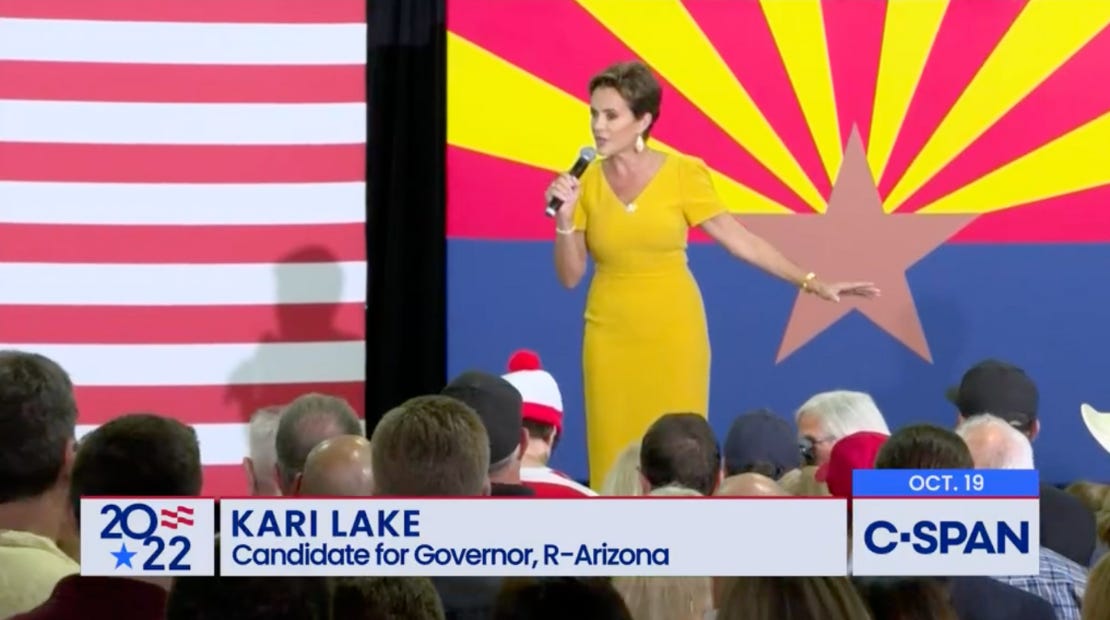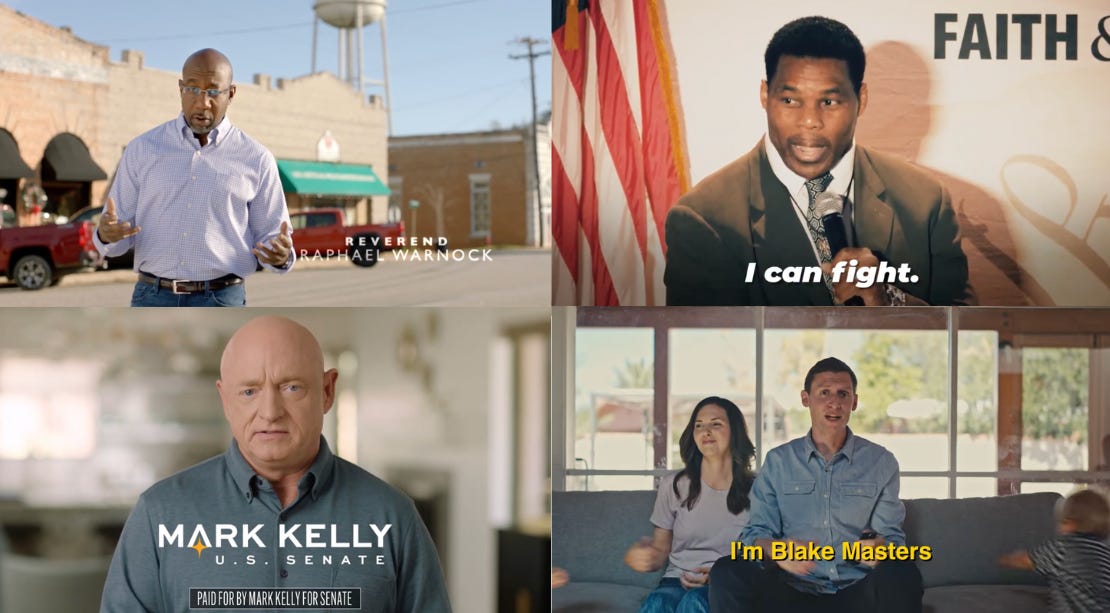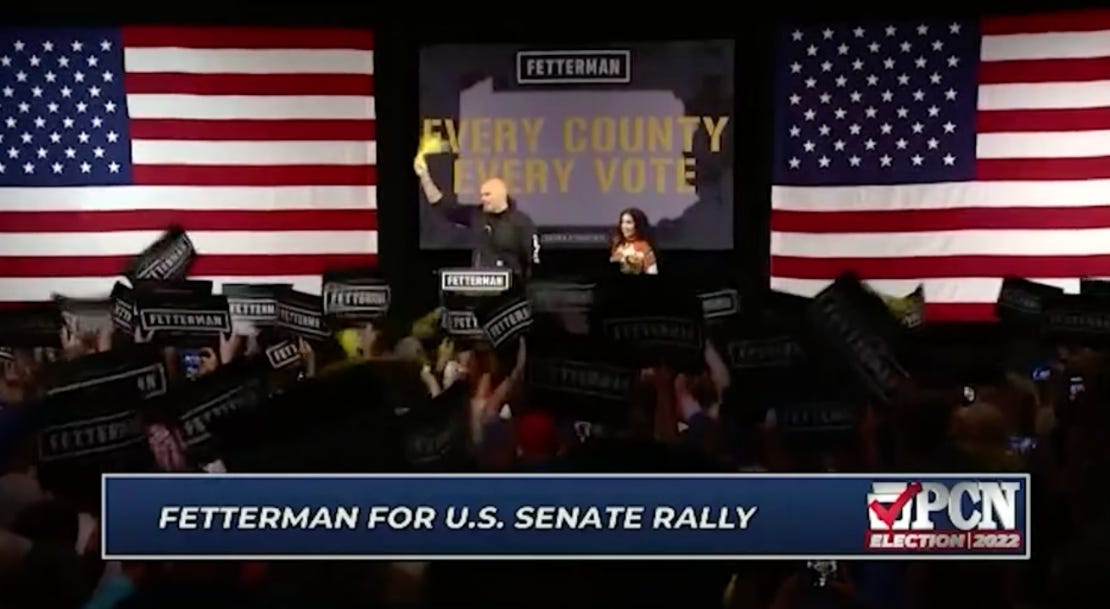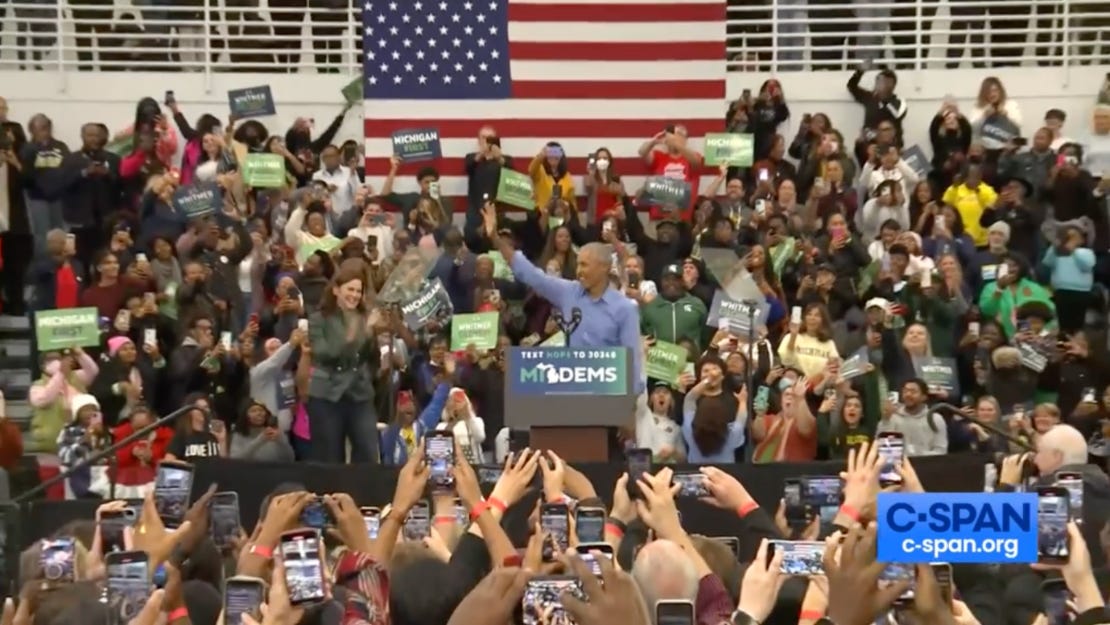Hello, in this issue we’ll look at…
How campaigns stage their rallies
These are the most expensive Senate races this year
Meet the font that could slay Comic Sans
Was this email forwarded to you? Subscribe to see the art, design, marketing, and visual trends defining the look of politics today:
How campaigns stage their rallies
Campaign rallies are back.
COVID-19 led many candidates to move in-person events to Zoom two years ago. In this year’s midterms, though, the socially-distanced, drive-in events then-candidate Joe Biden held are no more, and campaign advance staff and volunteers are back on the trail making rallies happen.
“They make the TV picture happen and the crowds happen and the flags and the lights and the audio,” said Doug Landry, who’s worked advance for politicians including Hillary Clinton. He said the key to good staging is to “make it look good without it being too perfect” and to “look like Americana.”
“The main thing is that the camera shot, the picture that people are left with, whether that’s now on a tweet photo or an Instagram Reel or the evening news… is to make sure that the candidate is presented in the most attractive way to voters” and to achieve the campaign’s message, he said, whether it’s at a farm, diner, or an event for military families.
“Even for something as simple as a cup of coffee, then the questions are which coffee shop do we go to? Which one is locally owned versus not? Are you sure there’s going to be people in there at the time that you’re going? Are you sure they’re going to be friendly to your candidate?”
Landry said security is a greater concern than it used to be with the rise in threats against politicians. He called increased security the biggest change in campaign advance he’s seen since the camera phone allowed campaigns to send real-time video of event sites to headquarters.
“In any serious federal-level campaign, if your candidate is successful for long enough, the Security Service will pick them up, whether they won already or not, so at a certain point, the spontaneity option goes away,” he said. “That has become more frequent and for a wider number of candidates.”
Campaign advance also includes keeping the community happy and making sure attendees and vendors are treated respectfully. If a campaign doesn’t pay its bills on time, it could end up like “Veep” season seven episode one where a staging company didn’t set up the rally for Selina Meyers’ campaign announcement because of a nine-year overdue bill. Not paying bills does happen in real life: 10 cities said former President Donald Trump’s political committee didn’t reimburse them for police and fire department services after his rallies, according to a 2019 report from the Center for Public Integrity.

“There’s a lot of softer stuff that they do as well to make sure that a community is happy with the candidate’s visit and feel inclined to vote for her or him, and the end goal is to generate positive voter momentum but also a lot of good media coverage thereafter,” Landry said.
He runs Advance Camp to train Democratic staffers, and called advance “the most fun job in politics” because of the close proximity you can get to the candidate at a young age. “This is a great entree into politics and a fun place to contribute,” he said. “I would just also caution to make sure you have a long-term plan, an exit strategy.”
Landry said advance staffers often go into event management, communications, or private offices for CEOs and high-net-worth individuals. They remain on call, though, to help even after leaving politics when big rallies and events come to town, he said.
These are the most expensive Senate races this year
The most expensive U.S. Senate races are also the most competitive, with Pennsylvania at the top.
Here’s the top five highest-spending races, according to data from AdImpact, an ad-tracking firm:
Pennsylvania (Lt. Gov. John Fetterman (D) v. Republican Mehmet Oz): $250.4 million
Georgia (Sen. Raphael Warnock (D) v. Republican Herschel Walker): $239.9 million
Arizona (Sen. Mark Kelly (D) v. Republican Blake Masters): $189.3 million
Wisconsin (Sen. Ron Johnson (R) v. Democrat Mandela Barnes): $177.3 million
Nevada (Sen. Catherine Cortez Masto (D) v. Republican Adam Laxalt): $163.3 million
Arizona, Georgia, Nevada, and Pennsylvania are rated toss ups by Cook Political Report and Wisconsin is rated leans Republican.
In pricey Pennsylvania, Fetterman emphasizes his blue-collar roots in his ads and criticizes Oz as a wealthy, out-of-touch phony, according to FiveThirtyEight’s ad review. Oz pitches himself in his ads as a moderate and ads attack Fetterman as soft on crime.

Together, the top five races make up nearly 60% of all Senate campaign spending, according to AdImpact. In 2018, Texas’ U.S. Senate race between Sen. Ted Cruz (R) and Democrat Beto O’Rourke set the record for the most expensive in U.S. history at $93 million, a total each of the top five races have already exceeded.
Warnock is the highest-spending candidate, dropping $53.5 million, followed by Kelly at $40.7 million. Democratic candidates are outspending Republicans in Arizona, Florida, Georgia, Nevada, North Carolina, Ohio, Pennsylvania, and Wisconsin, but Republican campaign committees are spending big to supplement candidates in Georgia, Pennsylvania, Wisconsin, and Nevada.
Meet the font that could slay Comic Sans
Comic Sans makes it easier to read for people with dyslexia, but it’s also a punchline. Enter Inconstant Regular, a new typeface designed to help dyslexic readers and please designers at the same time.









